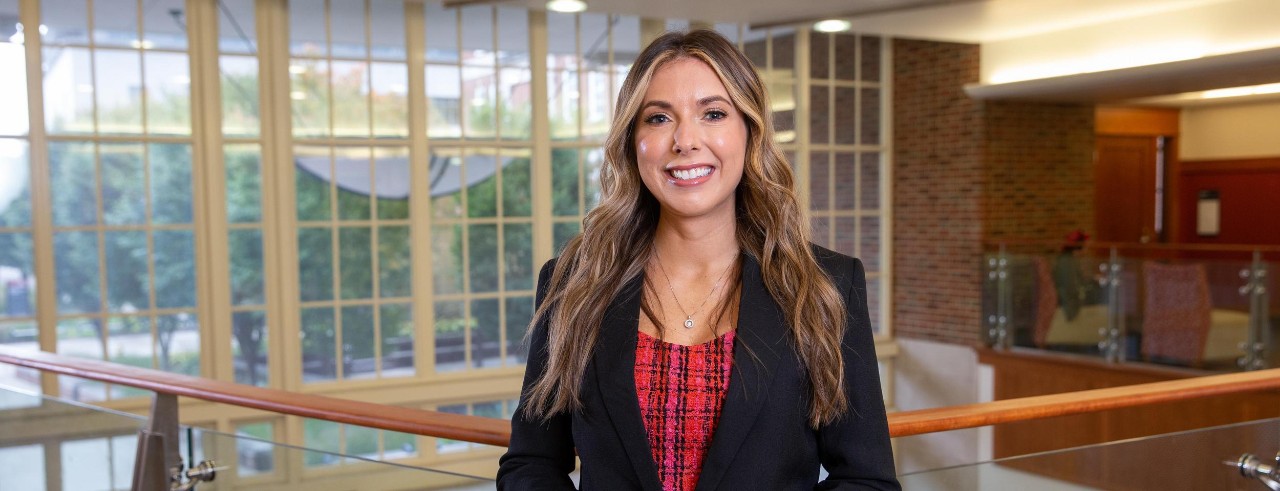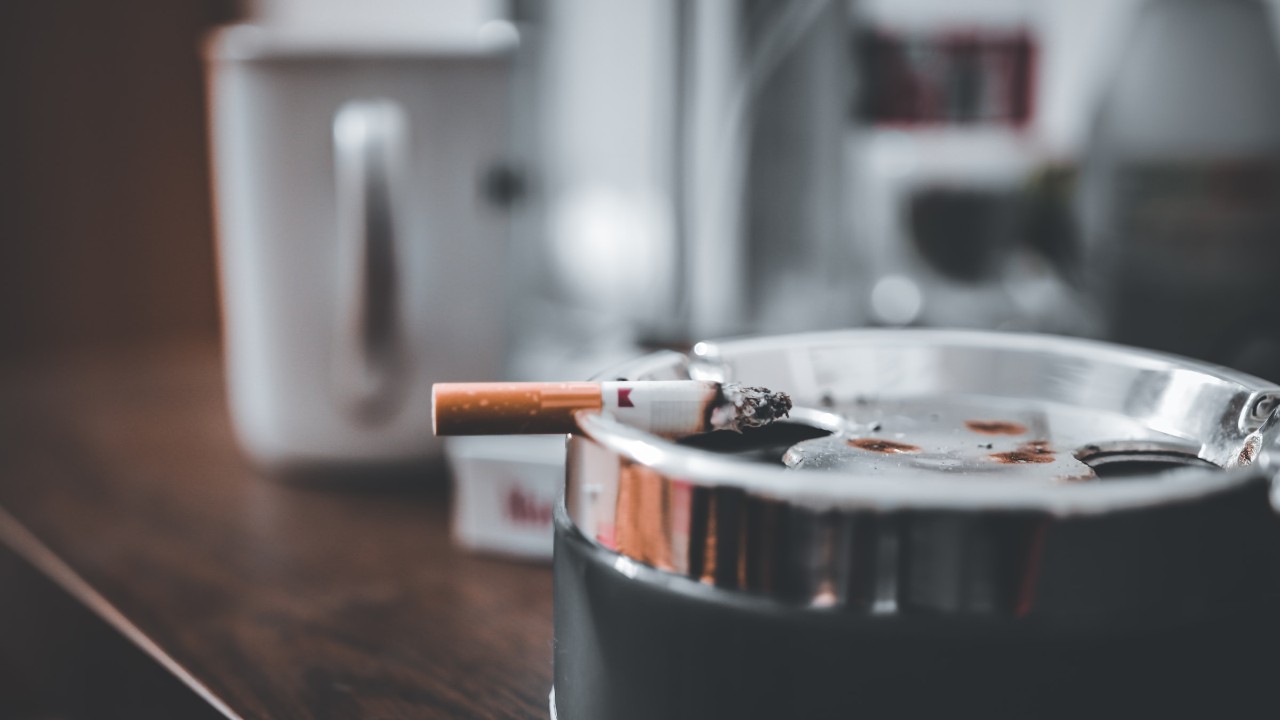
Study: Thirdhand smoke may harm children
UC researcher says toxic substances remain on surfaces, even in homes that ban indoor smoking
It’s long been established that secondhand smoke is a detriment to health and linked to cancer.
Now, researchers are looking more closely at thirdhand smoke, which is the presence of toxic tobacco by-products that remain on surfaces such as furniture, décor, walls and floors.
In a new study, published in the Journal of Exposure Science & Environmental Epidemiology, researchers tested the surfaces in smoking households where children reside and found troubling results, says Ashley Merianos, a tobacco researcher at the University of Cincinnati who led the study.
Researchers found nicotine on surfaces in all of the children's homes and detected the presence of a tobacco-specific carcinogen (called NNK) in nearly half of the homes, she says.

Tobacco smoke leaves nicotine and its byproducts on surfaces. Photo/Unsplash/Nasfi
The study reported that the NNK levels on surfaces and vacuumed dust were similar, which Merianos says indicates that surfaces and dust can be similar reservoirs and sources of thirdhand smoke exposure for children.
“This is critically important and concerning, since NNK is considered the most potent carcinogen for tobacco-induced cancers,” says Merianos, an associate professor in UC’s School of Human Services.
Additional findings include:
- Children living in lower-income households had higher levels of NNK and nicotine found on home surfaces.
- Children living in homes that did not ban indoor smoking had higher levels of NNK and nicotine found on surfaces.
Merianos says that NNK and nicotine were still detected in homes with voluntary indoor smoking bans, which highlights the persistence of thirdhand smoke pollutants on surfaces in children's homes.
“This research highlights that home smoking bans do not fully protect children and their families from the dangers of tobacco,” she adds.
Merianos is a prolific researcher and has extensive training and experience in the epidemiology and prevention of substance use with an emphasis on tobacco, as well as quantitative statistical methods and clinical and translational research in the pediatric health care setting.
She is also a research affiliate member of Cincinnati Children’s Hospital Medical Center, the Thirdhand Smoke Research Consortium and the American Academy of Pediatrics Tobacco Consortium.
Featured image at top of Ashley Merianos. Photo/Andrew Higley/UC Marketing + Brand.
Impact Lives Here
The University of Cincinnati is leading public urban universities into a new era of innovation and impact. Our faculty, staff and students are saving lives, changing outcomes and bending the future in our city's direction. Next Lives Here.
Related Stories
We love ‘Lucy’ — the AI avatar redefining UC tech transfer
July 17, 2024
In a visionary leap at the University of Cincinnati, the marriage of artificial intelligence and interactive technology has birthed "Lucy," a Smarthelp AI avatar poised to revolutionize how regional industries engage with UC's tech transfer initiatives.
NIS program opens new horizons for international student
July 17, 2024
In his pursuit of physics and a taste for research, Akash Khanikor ventured from his hometown in India's Assam to the University of Cincinnati, drawn by the promise of hands-on exploration early in his undergraduate career as a NEXT Innovation Scholar.
Camp aims to empower children, teens who stutter
July 17, 2024
A one-week, evidence-based program for children and teens who stutter at the University of Cincinnati will teach kids to communicate effectively, advocate for themselves and develop confidence about their communication abilities. Camp Dream. Speak. Live., which is coming to Cincinnati for the first time July 22-26, began in 2014 at the University of Texas at Austin. The Arthur M. Blank Center for Stuttering Education and Research at UT expects to serve more than 2,000 children at camps across the United States, Africa, Asia and Europe this year.
UC archivist explores Troy’s invisible workers
July 17, 2024
UC Classics archivist Jeff Kramer examined the unheralded and largely uncredited role laborers played in the 1930s excavation at Troy in Turkey.
U.S. stroke survival is improving, but race still plays role
July 16, 2024
U.S. News & World Report, HealthDay and Real Health covered new research from the University of Cincinnati that found overall rates of long-term survival following stroke are improving, but Black individuals experience worse long-term outcomes compared to white individuals.
Presidential challenge to UC: Join Ride Cincinnati to fight cancer
July 16, 2024
UC President Neville Pinto has again challenged every UC college and unit to send at least one rider to the September 14 Ride Cincinnati event to help fundraise for cancer research and cancer care. UC students ride free. Signup by July 31 for free UC-branded cycling jersey.
Building potential
July 16, 2024
Unexpected advice led to a new area of interest and growth for Andrew Matthews, leading him to the University of Cincinnati’s College of Engineering and Applied Science, construction management and cooperative education experiences at Turner Construction.
Pediatric ICU rates linked to housing quality, income, education
July 16, 2024
Healio highlighted research led by the University of Cincinnati and Cincinnati Children's Hospital's Carlie Myers that found a link between pediatric ICU admission rates and housing quality, household income and education.
UC study: Long-term stroke survival improving, but racial disparities remain
July 15, 2024
New research from the University of Cincinnati published in the journal Neurology found long-term survival rates following acute ischemic strokes are improving, but Black individuals experience worse long-term outcomes compared to white individuals.
Students organize to shake up Parkinson's care model
July 15, 2024
University of Cincinnati student and Parkinson's Together founder Mallika Desai joined the Parkinson's Experience Podcast to discuss the nonprofit's origins and multidisciplinary mission to meet the needs of patients in their community.
